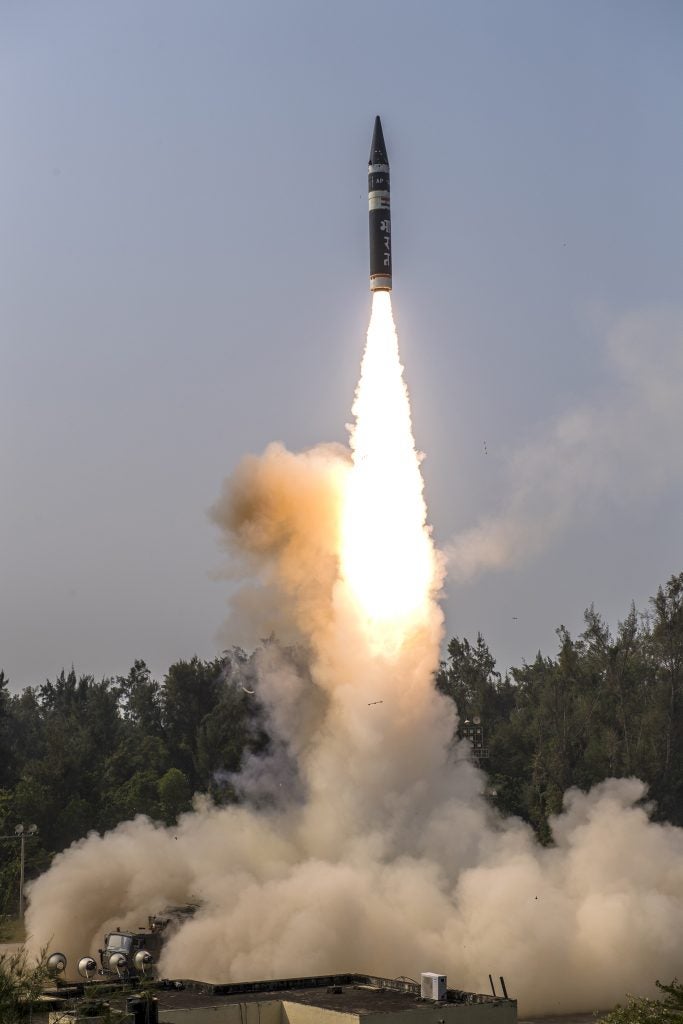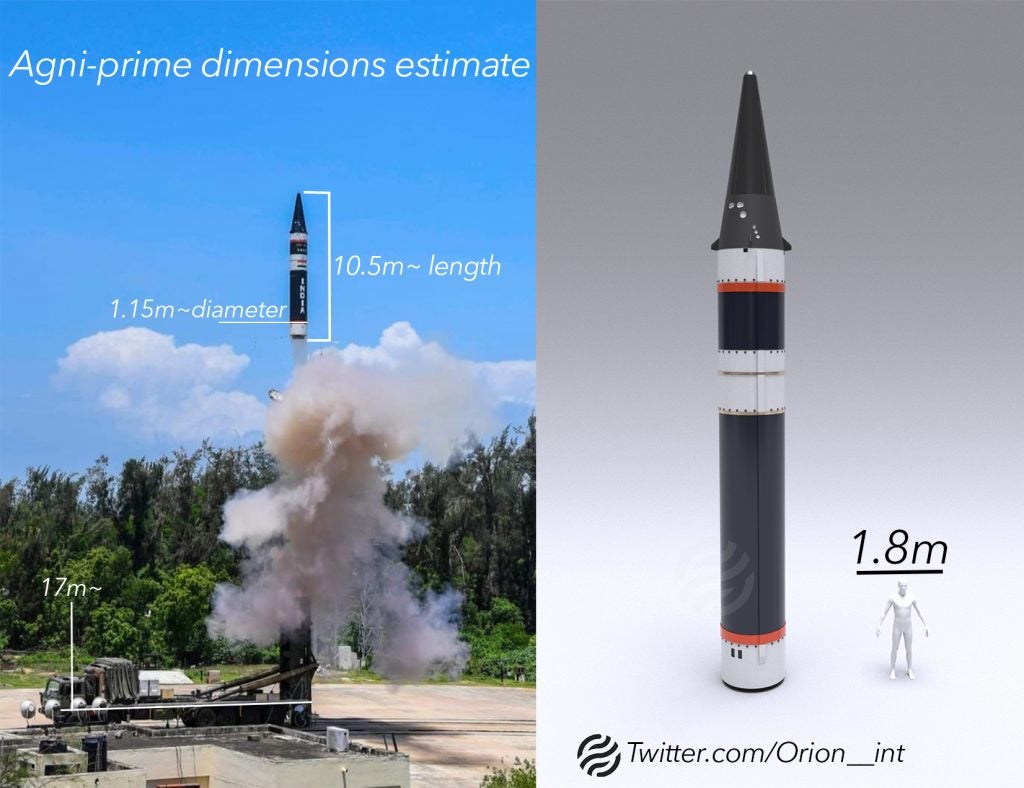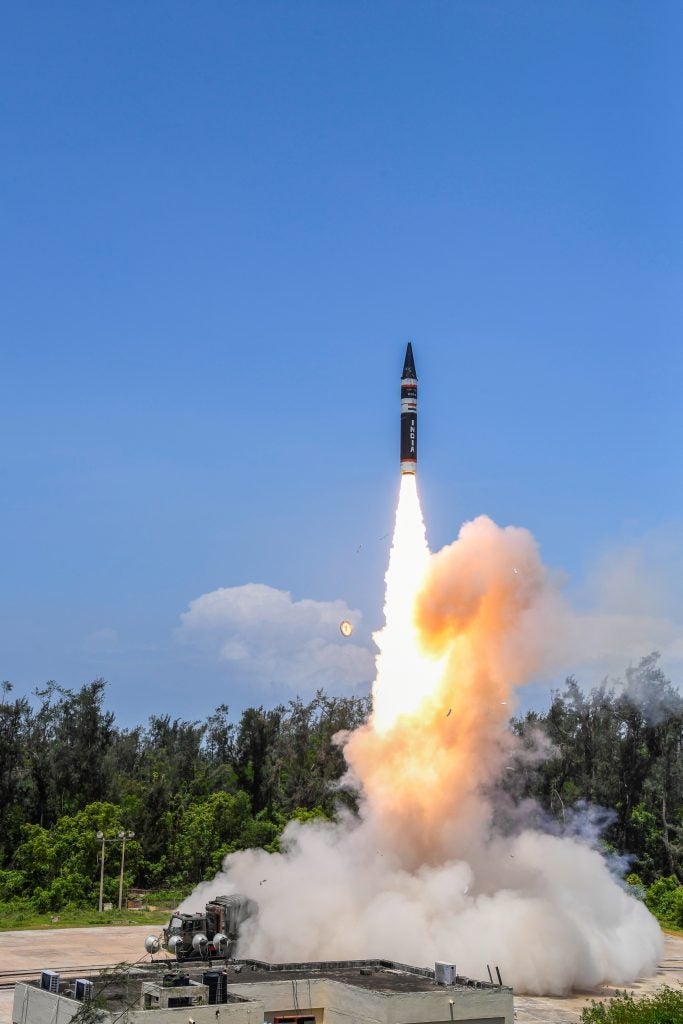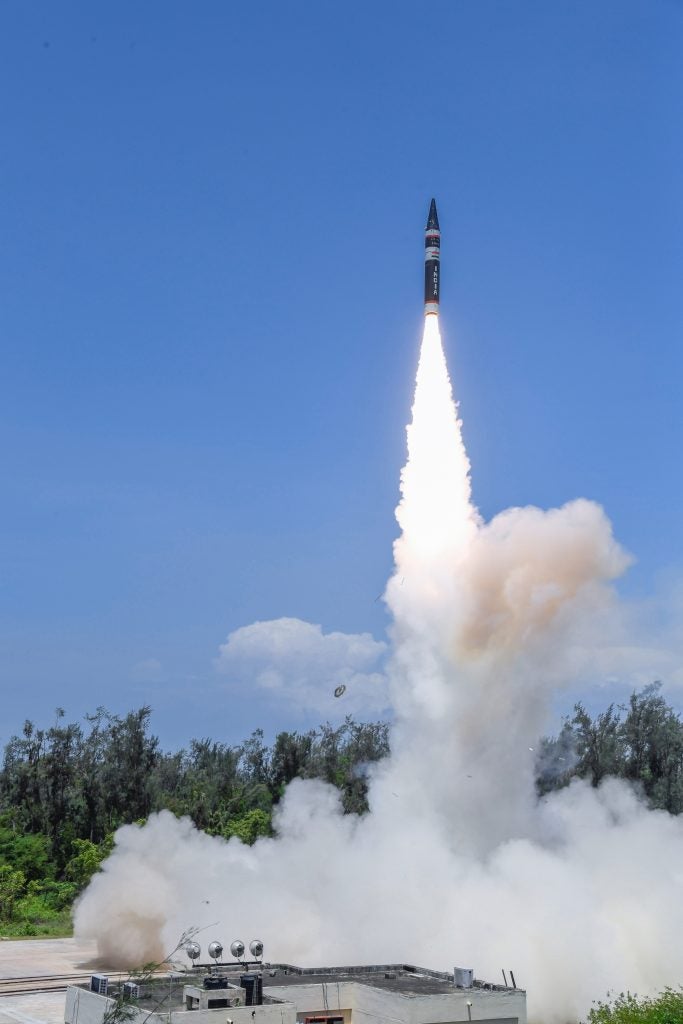India Successfully Conducts Second Agni Prime Ballistic Missile Test
India’s Defence Research and Development Organisation (DRDO) successfully tested the Agni P ballistic missile on December 18, 2021. The launch was conducted from Dr APJ Abdul Kalam island in the Bay of Bengal. Various telemetry, radar, electro-optical stations and down range ships tracked and monitored the missile trajectory and parameters. The missile reportedly met all mission objectives with a high level of accuracy.
Agni P, also called Agni Prime, is a new generation nuclear capable ballistic missile developed by DRDO. This is the second test of the missile. The first test was conducted on June 28, 2021. This second flight-test had some additional features compared to the first test according to DRDO Chairman Dr G Satheesh Reddy. Both tests were conducted at ranges less than 1,700km according to area warnings tweeted by @detresfa_, found here and here respectively. DRDO claims it has range capability between 1,000 and 2,000km.

Agni P is a two-stage solid propellant ballistic missile with a “dual redundant” navigation and guidance system. It is a canisterised missile and uses a cold launch system. Photometric analysis by Orion_Int, which can be read here at Overt Defense, shows it having a diameter of around 1.15m and a length of around 10.6m.

Agni P is an advanced variant of the Agni class of missiles and utilizes many features used in the longer ranged Agni 4 and Agni 5. These include using composite motor casings, new propulsion systems, guidance, control mechanisms and navigation systems. It is the first Indian missile with a Manoeuvrable Reentry Vehicle (MaRV), having 4 small fins on its RV. This makes it more accurate and harder to intercept by ballistic missile defence systems. It also uses a ring laser gyroscope-based inertial navigation system.

Agni P is reportedly not a replacement for any of the existing Agni series missiles, but would complement them. Mastering the MaRV technology would allow India to develop proper anti-ship ballistic missiles if necessary. Agni P would further strengthen India’s stated minimum credible deterrence capabilities. However it would also be a potential counterforce weapon with conventional or nuclear warheads.

